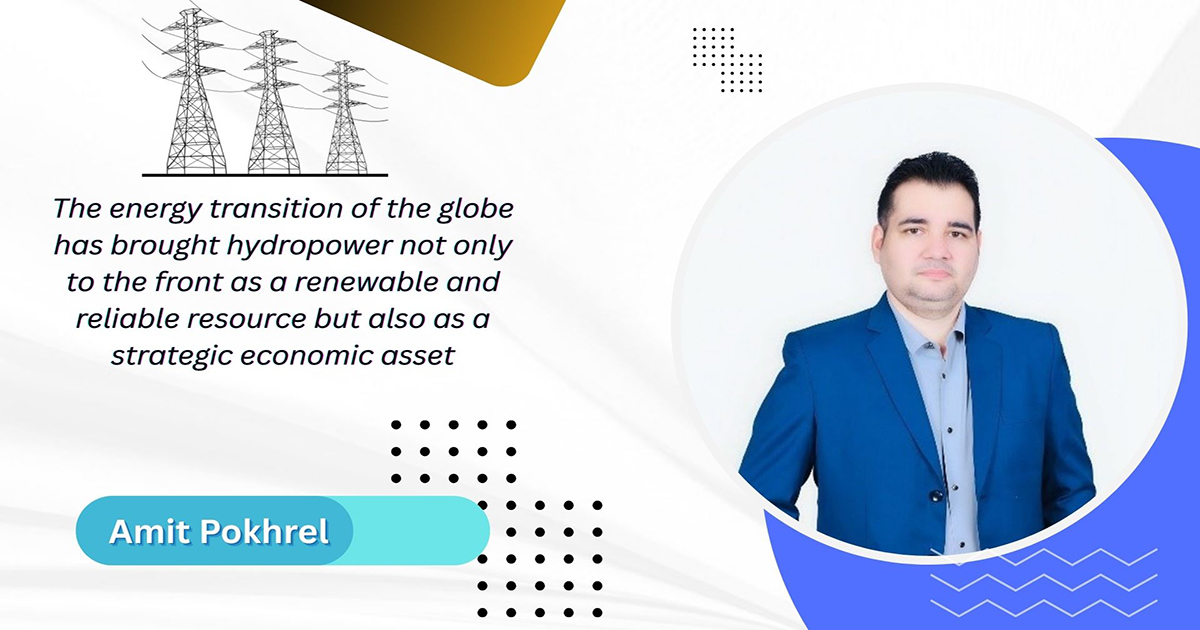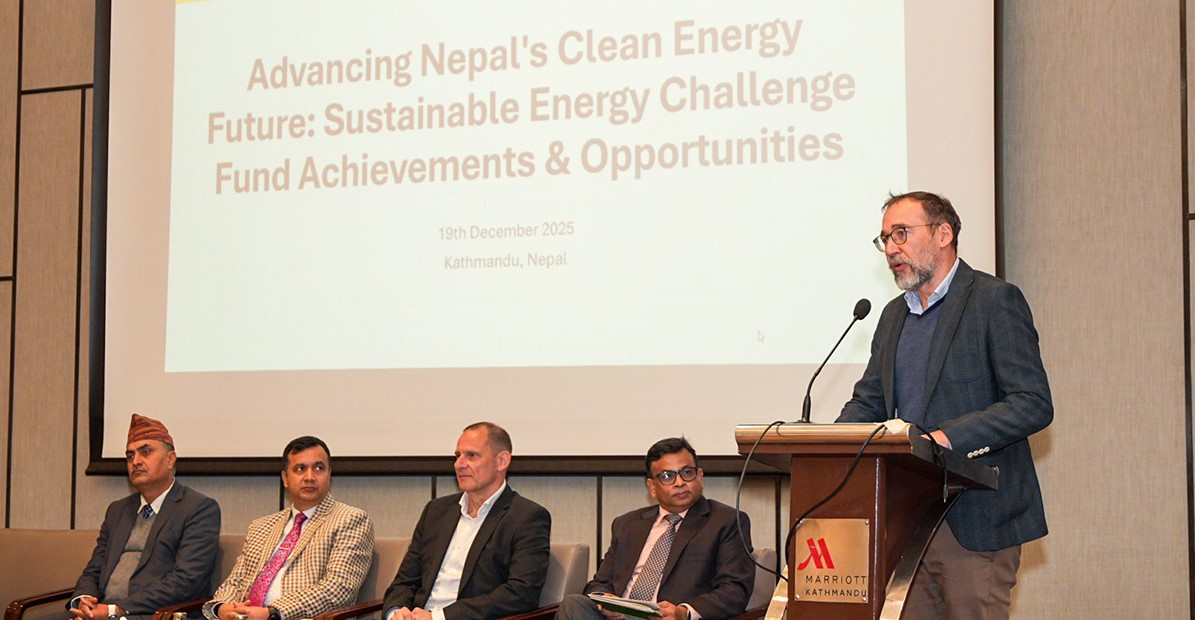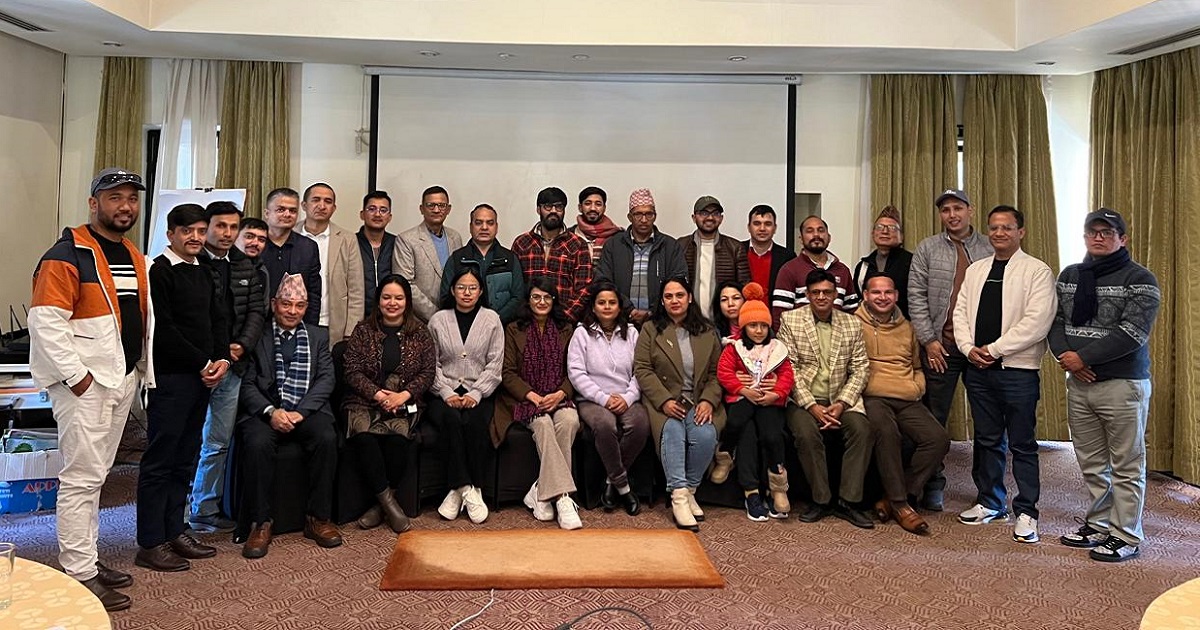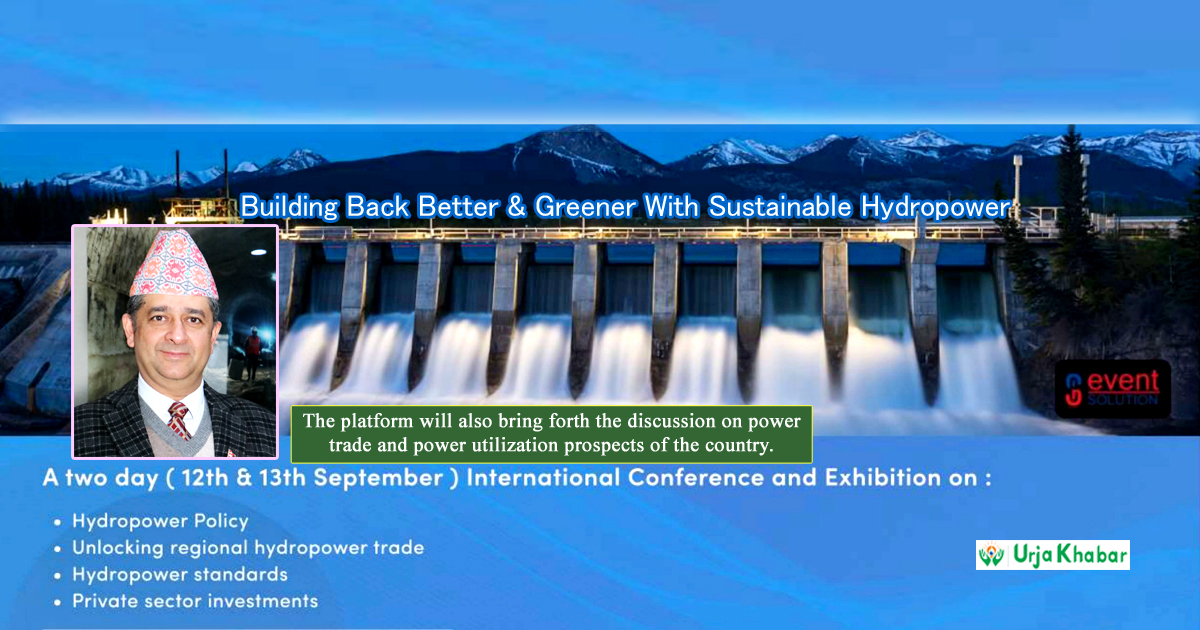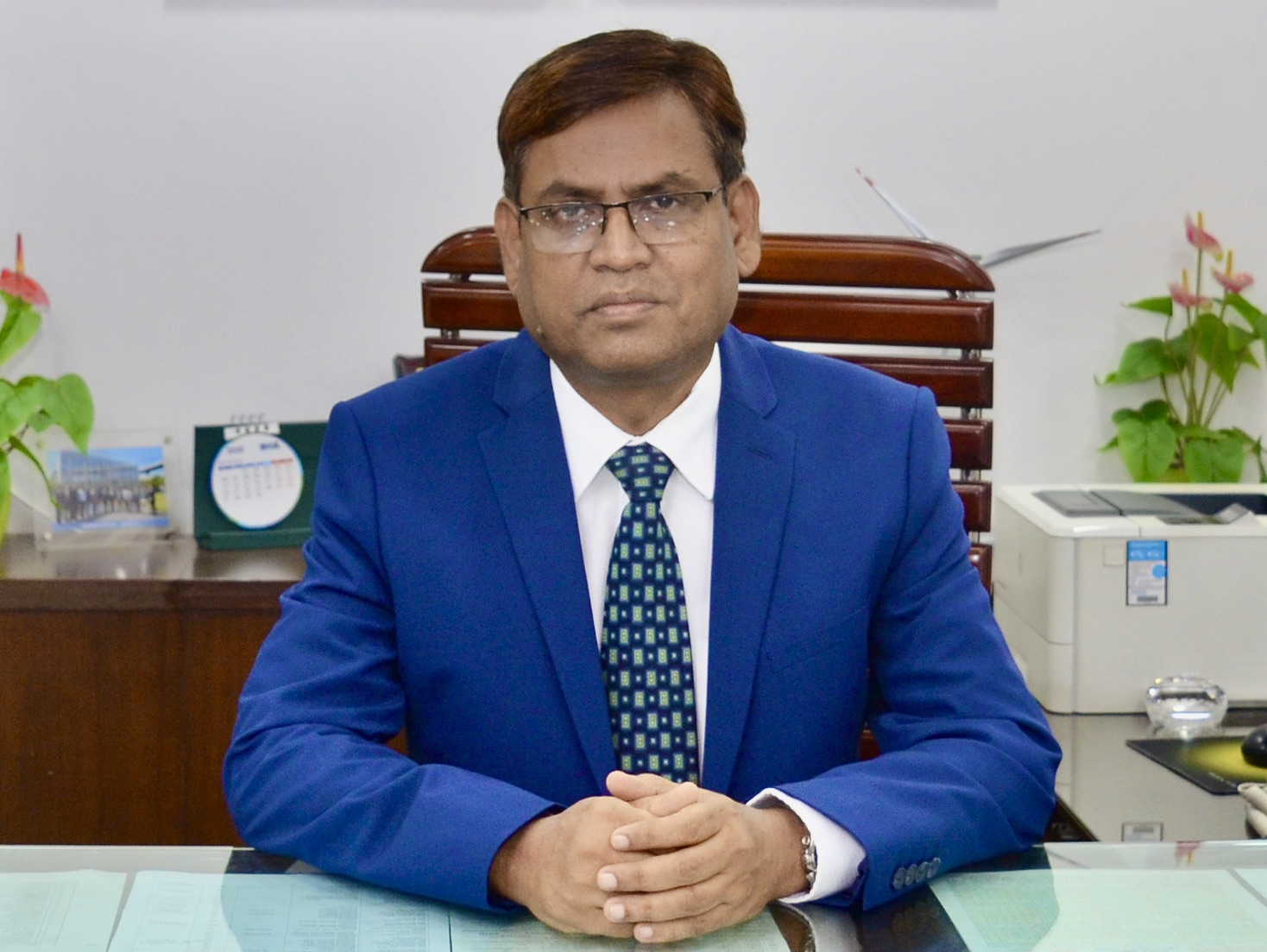Energy Update
Developing Green Hydrogen is Equivalent to Constructing a Reservoir Hydropower project
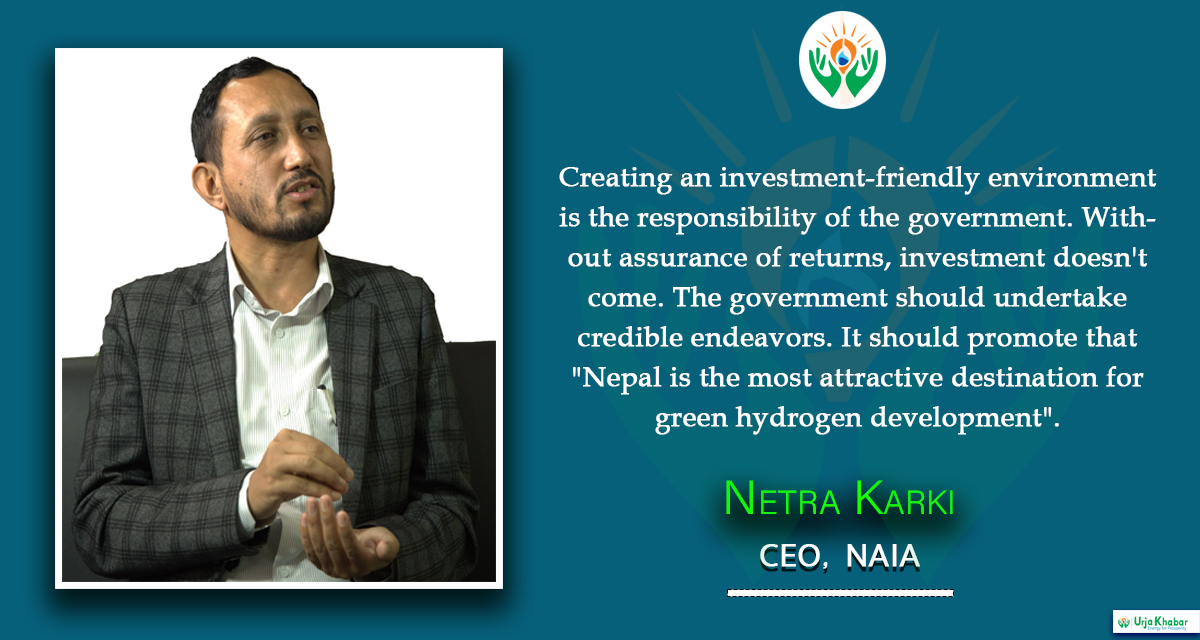
Netra Karki was active in journalism for more than a decade. Initially, he ran the "Urja" program through Nepal Television. After that, he advocated for energy and hydropower development for a long time through "Mission Urja" on News24 TV. By prioritizing the issues of the private sector in hydropower development and exposing government discrepancies and distortions, he has been advocating for the development of this sector through journalism.
Along with active journalism, he was also involved in social service. In the local elections of 2074 BS, he was elected as the chief of Sunkoshi Rural Municipality-1 with a heavy majority. After becoming involved in the development and construction of the local level through politics, he started the 'Ek Ghar, Ek Dhara' campaign and provided drinking water facilities in that area. In the region, which had severe problems with drinking water and irrigation, he also developed two solar lift irrigation projects. After completing his five-year term as a local representative, he returned to the campaign for energy development promotion.

Now a days, Karki is engaged in promoting hydropower development, environmental conservation, climate change, and the development of green hydrogen. He is also the Chief Executive Officer of the Nepal Association for Impact Assessment (NAIA), an organization working in the areas of clean, green and renewable energy development, environmental conservation, and mitigating the impacts of climate change. Here is an edited version of the Urja Bahas with this dedicated youth activist:
You abruptly shifted from active journalism to politics. How was your practical experience working as a local representative for five years?

Even while I am in in journalism, I was socially active in politics. After the devastating earthquake in 2072 BS, my interest in this area grew even more. As a local persion of Sindhupalchok, a district heavily affected by the earthquake, my focus naturally shifted towards it. Some responsibilities needed to be addressed in the that area, and this compelled me to become active in politics for a while. During the difficult times following the earthquake, and in response to the people's aspirations, I was elected as the Chairman of Sunkoshi Rural Municipality-1 in the local elections of 2074 BS.
While in journalism, I was committed to the campaign to make the country's energy sector prosperous. Hydropower and the energy sector are tools to make the country prosperous. Working at the local level also provided an opportunity to connect with the real situation of rural people. Why hasn't development occurred? What are the basic needs? What are the reasons for the lack of progress? I had the opportunity to identify these issues. I am satisfied to have had the chance to work closely with the people for five years.
Local bodies often lack transparency. There is sufficient criticism that activities are not effectively aligned with the needs, hindering their impact. Particularly, there is concern about how work is being carried out without visible results?
When the first local government representatives were elected following the federal restructuring, there was initially a lot of uncertainty, some questions, and a situation where leadership was needed despite some laws not being in place. Naturally, there were some problems, legal ambiguities to navigate, but over time, many of these issues have been addressed. Efforts have been made to formulate laws, regulations, and practices to solve problems in various contexts. In villages, there were situations where health posts were being constructed, employees were being recruited, and officials were visiting homes, which used to happen first in Singha Durbar, but now it's a common practice in local governments. Resources have also been allocated. Now, it's imperative for local governments to utilize the authority they have acquired according to their capacity, thoughts, and perspectives to carry out their work.
During your tenure in the local government, You were able to accomplish some work in the energy and water resource sector?
Although there wasn't much focus on the energy and water resource sector initially, I undertook projects in the energy sector over a considerable period. Specifically, I implemented solar-water pumping systems in two villages, providing access to clean drinking water. Additionally, the 'Ek Ghar, Ek Dhara' campaign was initiated in Sunkoshi Rural Municipality, which was the first system in all over the Nepal. As a result, every household in that area now has access to clean drinking water round the clock.
Returning from active politics, you have reconnected with various dimensions of energy development. Is it possible to integrate energy, environment, and green hydrogen development?
In the past decades, there has been a concerted effort globally to integrate every activity with the environment. The significant rise in global temperature due to climate change has created a massive problem. Climate and humanitarian crises are escalating. It has become inevitable to address this issue. To heal the earth, we must heal the environment. Today's actions are the sufferings we endure, and future actions are the sufferings we must prevent.
Until we actively engage in advocacy and campaigns, or until there is pressure and accountability on international platforms, progress will not be made. Therefore, hydropower or other renewable energy development must now be environment friendly. Environmental conservation and the development of balanced clean energy can mitigate this crisis. Nepal also needs to take leadership in this regard. Through diplomatic channels, this work can be advanced.
The participation in the COP-28 in Dubai, Oman's 'Green Hydrogen Summit', Berlin's 'Renewable Energy Transition Dialogue', and the recently held 'World Green Hydrogen Summit' in the Netherlands provides an invaluable experience. How would you elaborate that experience?
Discussions and deliberations on these crucial issues have been ongoing at international conferences. The major industrialized and powerful nations, responsible for carbon emissions in the name of industrial development, have been widely criticized. Nepal, as a small Himalayan nation with zero carbon emissions, has been affected disproportionately. This global issue of carbon emissions has affected Nepal adversely.
Today, the world is united in addressing this issue. International initiatives are gathering momentum. With continuous participation in four to five international forums, the world seems to be converging on the sole agenda of promoting clean energy and achieving zero carbon emissions. If we aim to preserve the environment, the development of clean and green energy seems to be the only viable option, and it's a global endeavor.
When it comes to the debate on climate change, zero-carbon emissions, and the development of green hydrogen, developed countries often accuse underdeveloped countries of being too pressuring. What particularly stands out when viewed from international forums?
Than the small and underdeveloped nations, it is crucial to address the pressure exerted on big nations. When participating in COP-28 or other similar summits, major nations are still lagging behind. They fail to realize the urgency of their industrial development's carbon emissions and seem reluctant to address it. However, they continue to advance at the expense of others.
Nepal also raises issues related to clean energy and green hydrogen development. However, the global campaign "Save the Earth First" emphasizes that without saving the planet, there will be no prosperity! Platforms like COP-28 have reached a consensus on the issue of energy transition. This is driven by the pressure from the global community.
The dominance and influence of larger and industrialized nations are now dwindling. Saving the Earth and the environment should be prioritized over development, prosperity, and industrial production. The world is moving forward on this issue. International platforms witness discussions and negotiations four to five times a year. These platforms exert significant pressure on larger nations.
While participating in such debates at the international level, does Nepal's readiness become evident? How has the government been working in this regard?
Nepal's presentation was commendable in COP-28, which has naturally elevated its position. The preparation was also good. It is imperative to recognize the opportunity provided to convey our thoughts to the world. This has made Nepal's issues known at the international level. However, the expectations of ordinary citizens regarding how we perceive and how the government proceeds have not been met.
The issue of the Himalayas was raised for the first time in COP-28 in an assertive manner. In it, the presentation by Nepal's Prime Minister was of a high standard. The issues raised therein, which could have been disseminated internationally, have not been. Our weakness is evident in not being able to do so. Many crucial debates following COP-28 have excluded Nepal. Now, it is not just about clean or green energy; it's about "climate diplomacy." In this regard, Nepal is lagging far behind.
The government of Nepal (GON) should have utilized such foreign forums. For instance, the Berlin Energy Transition Dialogue was a significant platform. Nepal's government was supposed to participate in the event organized by the German government. A request for participation was also made. From the Ministry of Energy, Water Resources, and Irrigation (MOEWRI) to the Nepal Electricity Authority (NEA), the matter was brought to their attention. However, they did not respond. There was no government representation.
India and China emit 20% of the world's carbon. Will we suffer from the pollution caused by their smoke, affecting our Himalayas and climate? This problem still looms ominously. At times like these, the government does not speak up in international forums. Nepal cannot negotiate independently with only India and China. Therefore, addressing climate change issues internationalization. The government seems oblivious to such issues. Why is the government not being accountable?
It seems like the government hasn't paid attention to such issues, right?
It seems like it has been completely overlooked. If international forums haven't consistently raised issues regarding climate diplomacy, we'll have to pay a heavy cost. The government and related authorities need to be accountable in this regard. Ignoring it without understanding the implications won't suffice.
Due to the power politics has Nepal overlooked the main issues?
Power and politics often reside in their own realm. While this process is ongoing worldwide, political parties of a nation must converge on sensitive issues. Various studies have shown the potential for Nepal to become a global hub for clean energy. Regardless of the governing body, there must be shared commitment to this cause. However, even if changes occur in India or developments unfold, unity prevails in international matters. A nation's prosperity demands a unified stance.
At a recent conference in the Netherlands, an African nation, Namibia, highlighted its leadership in hydrogen development. The country presented its own feasibility study at the conference. Hydrogen development is progressing rapidly, and Nepal, a nation with potential in this area, could lead the world. However, we seem to have missed the mark.
The GON's activity alone may not seem sufficient to achieve the goals sought. How can the government and the private sector coordinate to make this possible?
The biggest issue depends on the political leadership's willingness. Those in power or active in politics need to come together on shared issues. The foundation of Nepal's prosperity lies in hydropower, green hydrogen, and solar energy. There's immense potential in green hydrogen development. Every citizen's voice should unite on these matters.
India had significant participation at the Netherlands conference; it seemed to dominate the conference. It was evident that all major Indian power companies were fully invested in green hydrogen production. Such a vast market exists in India, China, and Bangladesh. Nepal aspires to lead South Asia. Climate change could lead to energy production failure, destruction of dams, or major disasters. In such a scenario, we must swiftly harness hydropower for practical use.
Kathmandu University (KU) has been consistently champaing that Nepal can lead in green hydrogen, but the progress doesn't seem to match the rhetoric. Where do you think the root of the problem lies?
Nepal has been making significant steps in the campaign for green hydrogen. KU initiated testing in 2065 BS. However, there has been a lack of integration into government policies and programs. In 2077 BS, the "Green Hydrogen Policy" was introduced, with Dr. Biraj Singh Thapa from KU playing a key role. Despite these efforts, progress seems slower than global trends.
The government introduced a commendable policy on 17th January, 2024. However, it seems to prioritize green ammonia over green hydrogen. Nepal aims to produce urea fertilizer from ammonia. Now, discussions and directives need to be prepared. Tomorrow, registering vehicles running on green hydrogen should be made easier. Policy hurdles related to ammonia production need to be addressed.
It's crucial to convey the message globally that Nepal can produce the cheapest green hydrogen and ammonia. For this, the government needs to collaborate with the private sector. Collaborative efforts with institutions like KU, Tribhuvan University, and NAST should be encouraged. If Nepal cannot conduct its own research, it can at least bring established technological developments into the country. Why is the government turning a blind eye to this aspect?
Currently, Oman is aggressively pursuing hydrogen production. There are six Gulf Cooperation Council (GCC) countries, one of which is focused on hydrogen production. Saudi Arabia is developing green hydrogen using solar energy to desalinate seawater, with each kilo of hydrogen costing around $5. This is considered cheap for them. However, seawater purification is required for its utilization. Nepal can export green ammonia, which can be used to produce urea for export to India, Bangladesh, Pakistan, and China.
How can the government ensure that the participation of the private sector in electricity generation is similar to that in green hydrogen? There are concerns that this campaign may not end up being another hydroelectricity debacle. How can this be addressed?
Green hydrogen is indeed a complementary partner to hydropower. Nepal faces a situation where it cannot sell surplus electricity annually due to Indian intermittently blocking it. This issue has numerous conditions and interests attached to it. The solution to this problem could lie in green hydrogen production. Now, every hydropower station should establish a hydrogen plant. Additionally, surplus energy should be stored in green hydrogen plants. Stored energy can be utilized during the dry season.
When implemented, there was a fear of domestic consumption during the dry season. However, export opportunities have emerged. Hydrogen is not just for hydropower; hydropower is not just for hydrogen. Moreover, additional energy storage based on green hydrogen, like the reservoir hydropower project, needs to be developed. For this, the government must swiftly formulate appropriate policies.
Firstly, good policies and regulations are required. KU has already conducted tests on hydrogen-powered cars. Several private sector individuals are also involved. Hydrogen-powered motorcycles have also been developed worldwide. This was demonstrated at the Netherlands conference. Eventually, hydrogen-powered vehicles could be introduced to the global market. In terms of energy comparison, hydrogen vehicles are found to be quite efficient. In Nepal, where it's challenging to traverse mountainous regions, electric vehicles could be a problem solver. Hydrogen vehicles function similarly to petroleum-fueled ones, with the added advantage of being able to carry more weight. Trucks and lorries can run on hydrogen fuel. Nepal is recognized for its potential in hydropower, clean water, green hydrogen, and solar energy.
Nepal also needs to develop new hydrogen projects. Utilizing technology developed globally can help. Increased use of hydrogen can reduce petroleum and fertilizer imports. The state needs to be proactive in this regard. It's not without challenges, but the government's commitment is crucial. Everything is possible with determination.
Is there a big challenge for investment?
Creating an investment-friendly environment is the responsibility of the government. Without assurance of returns, investment doesn't come. The government should undertake credible endeavors. It should promote that "Nepal is the most attractive destination for green hydrogen development". Then, by producing hydrogen and ammonia from clean water and clean electricity, Nepal can export them to South Asia. However, the primary task is to create an appropriate atmosphere, which is the government's responsibility. Non-governmental organizations and the private sector are ready to work togather.
Conversation
- Info. Dept. Reg. No. : 254/073/74
- Telephone : +977-1-5321303
- Email : [email protected]






